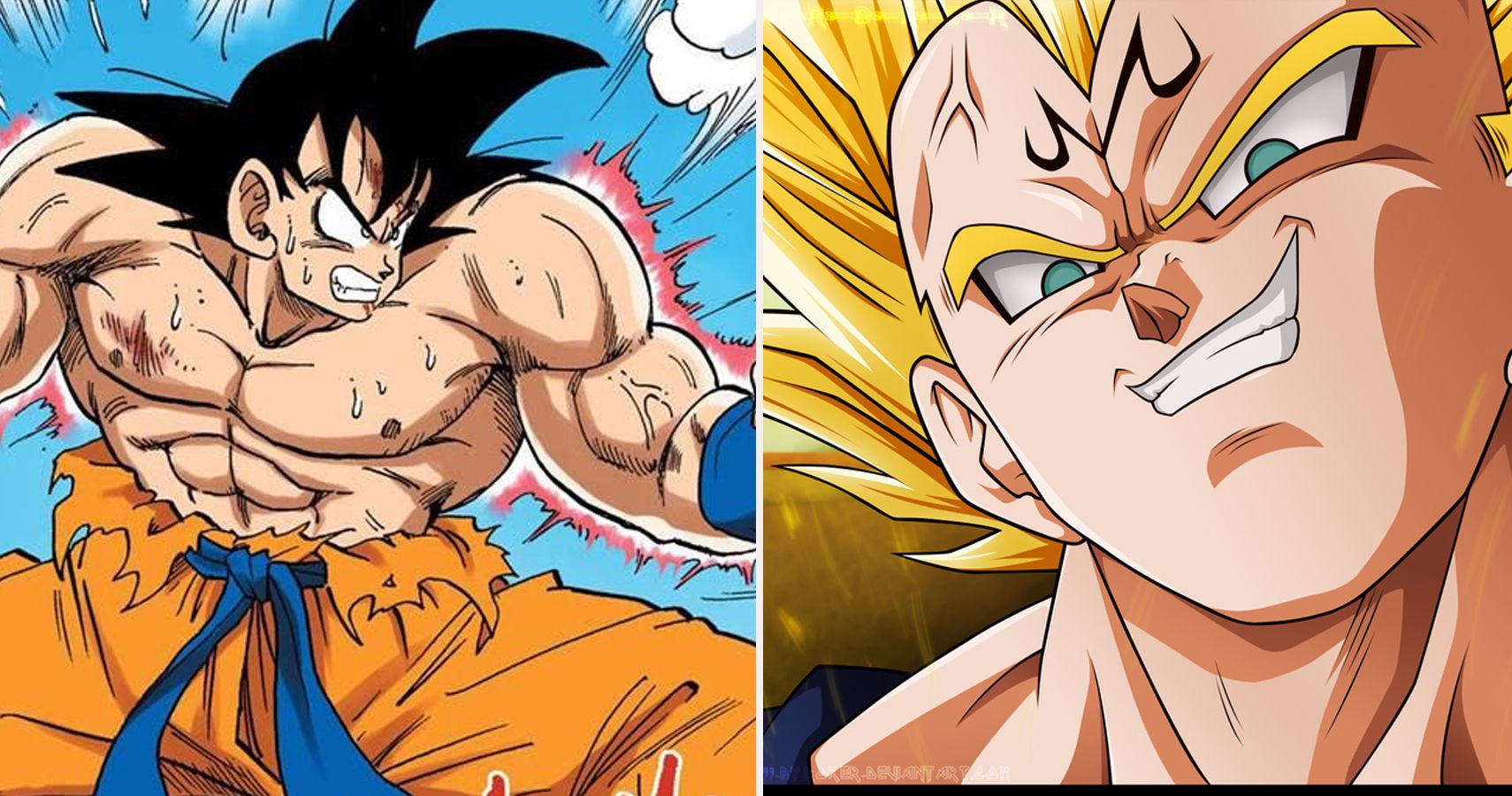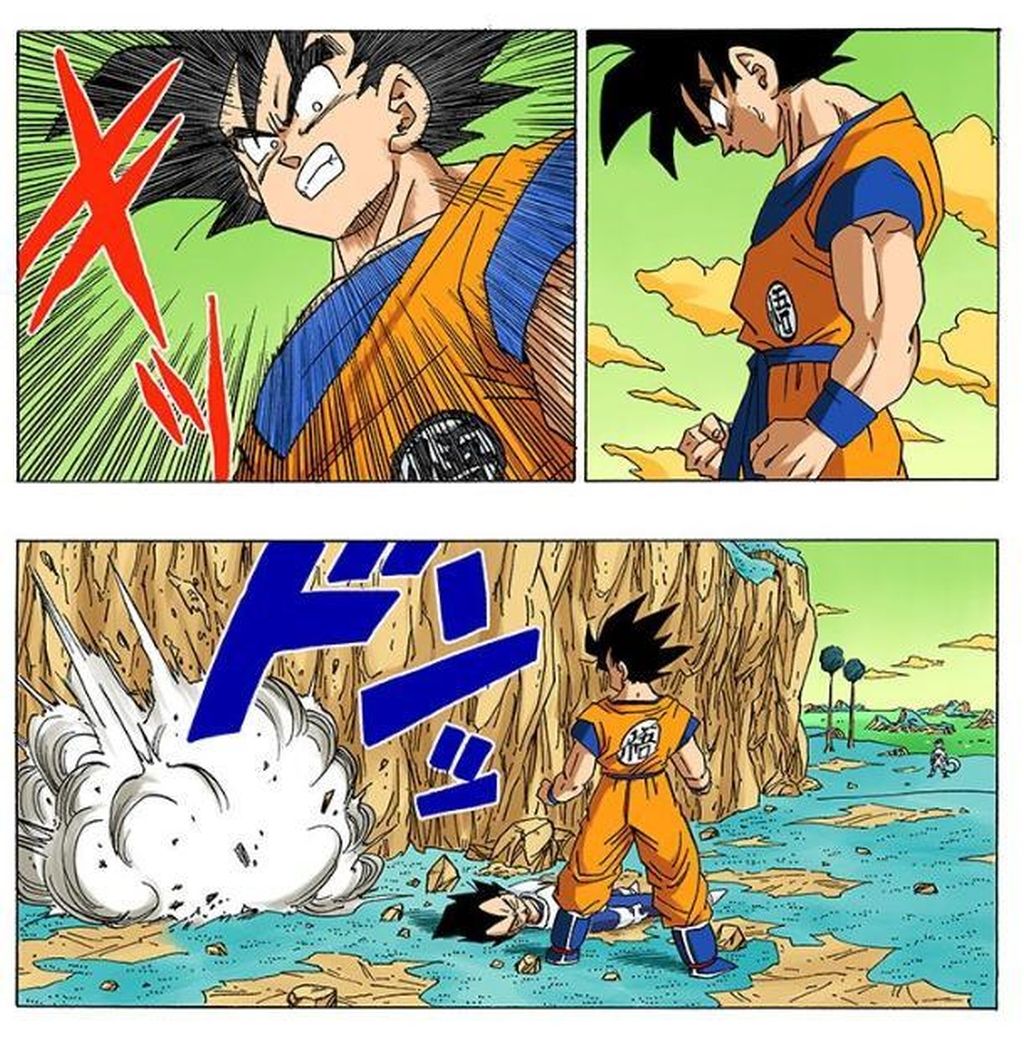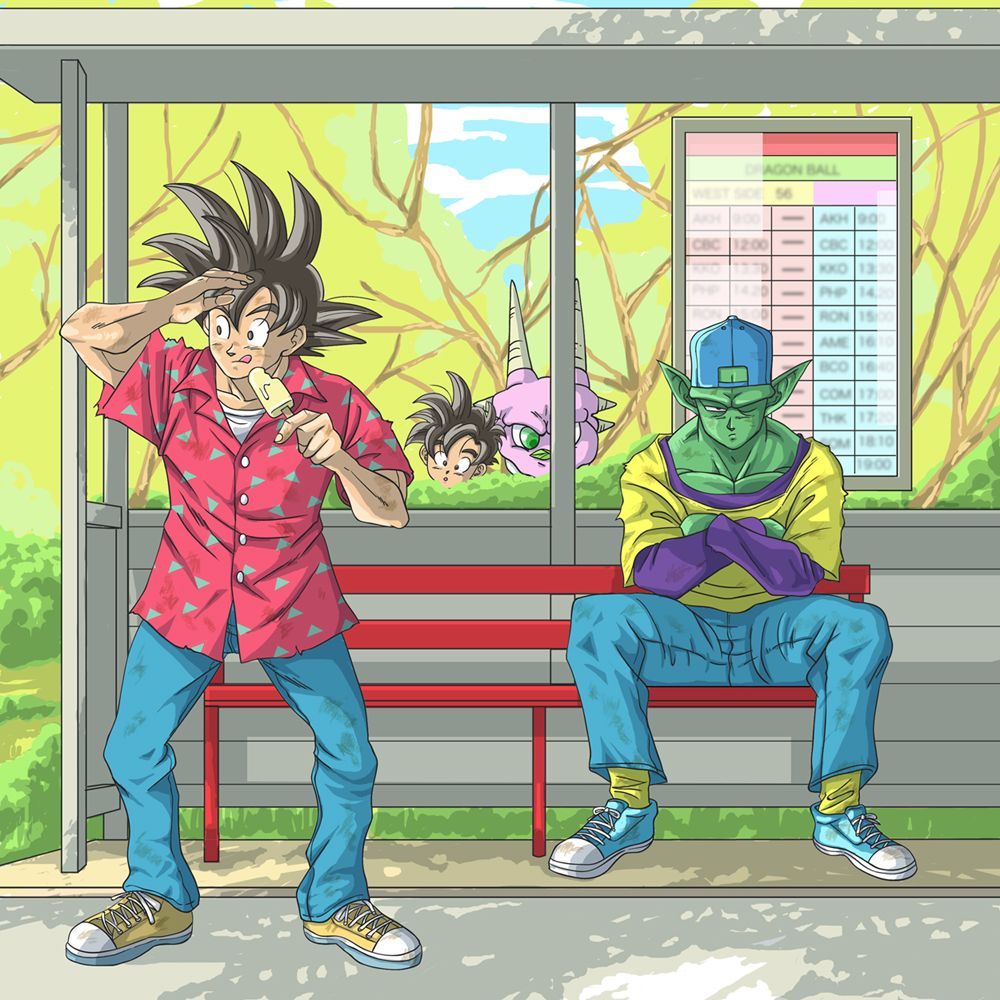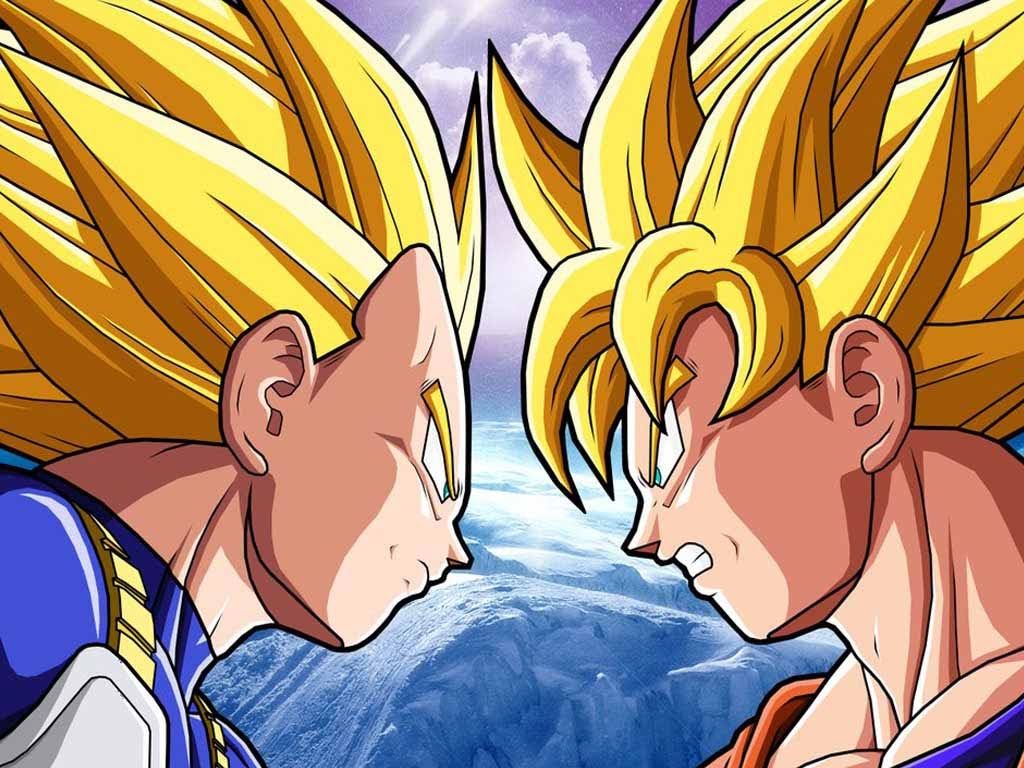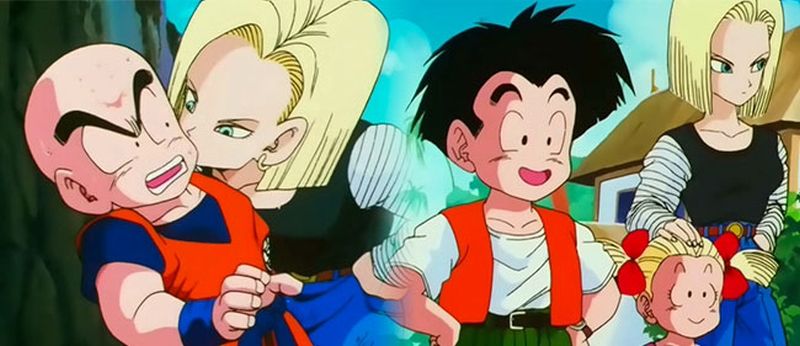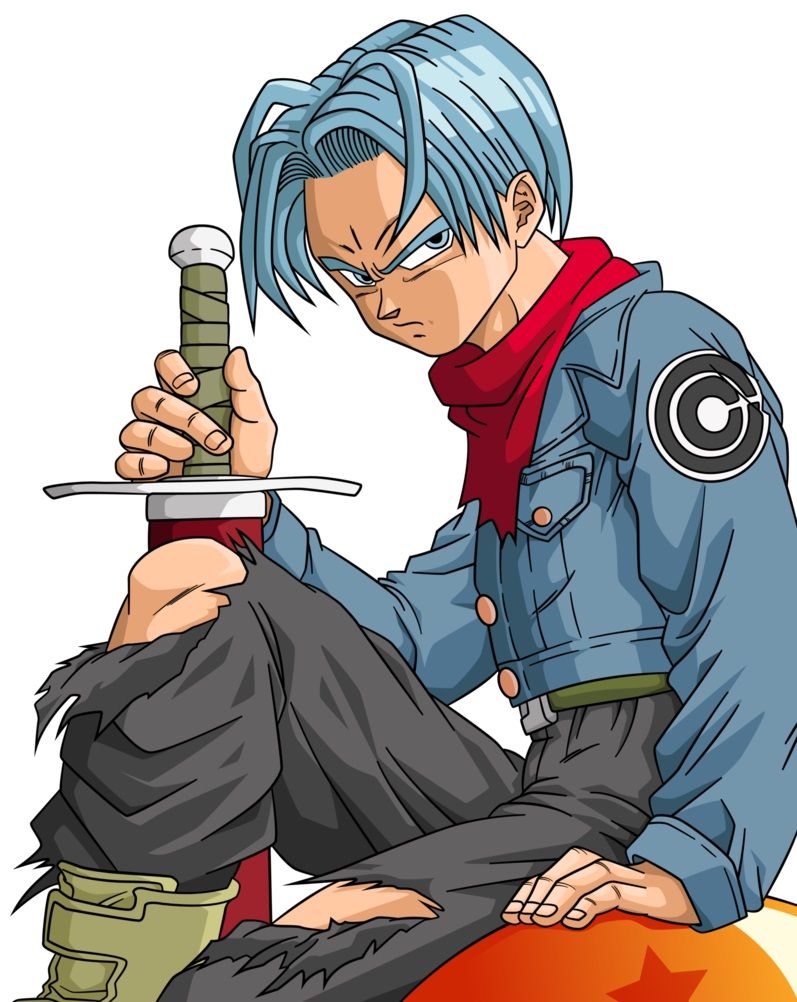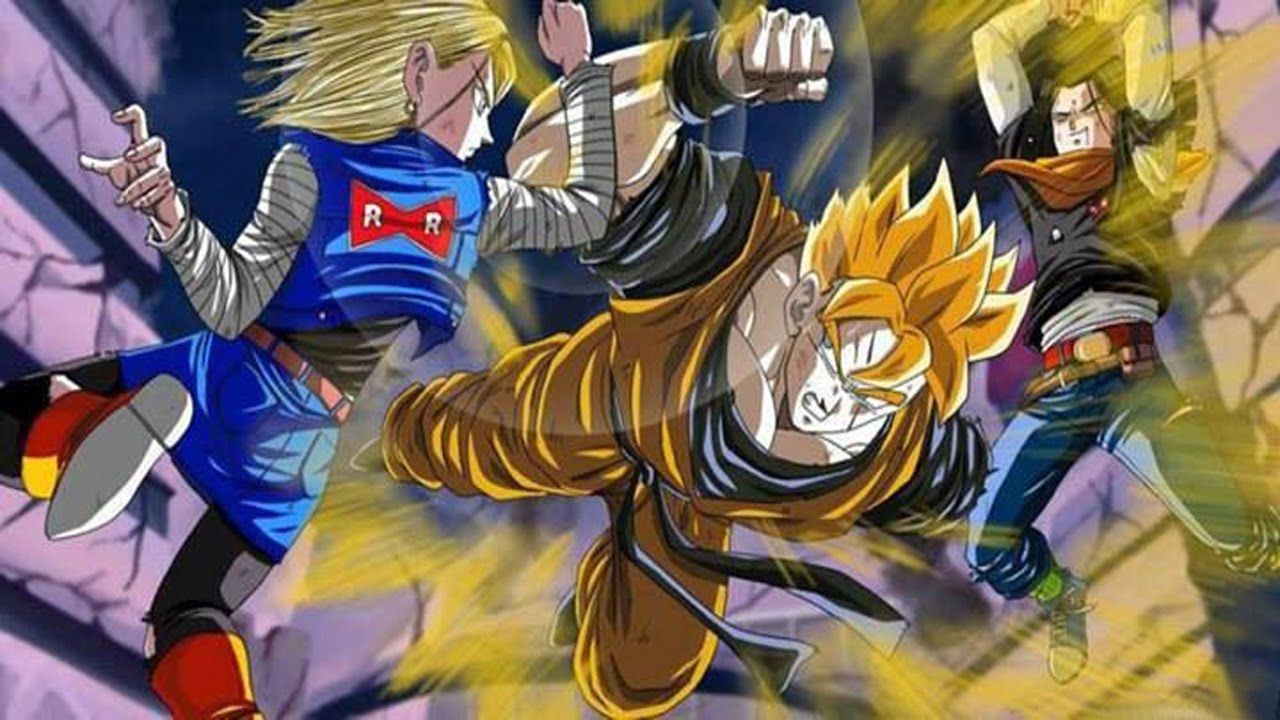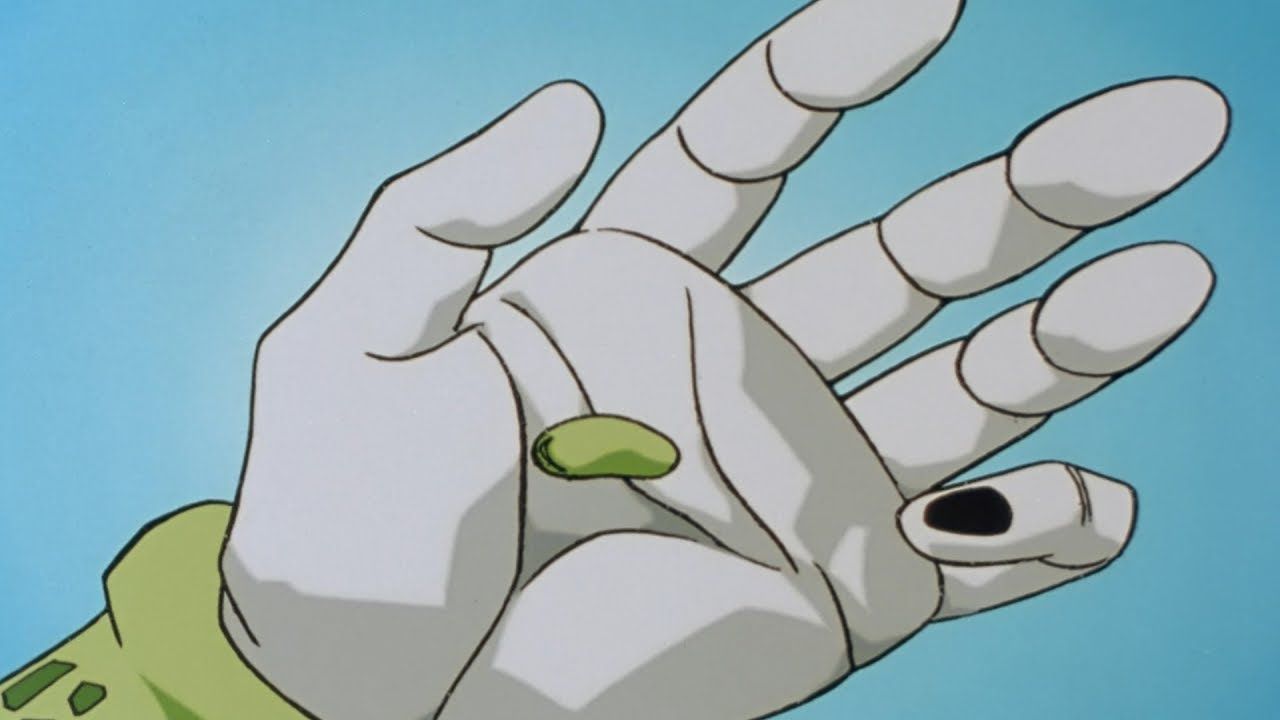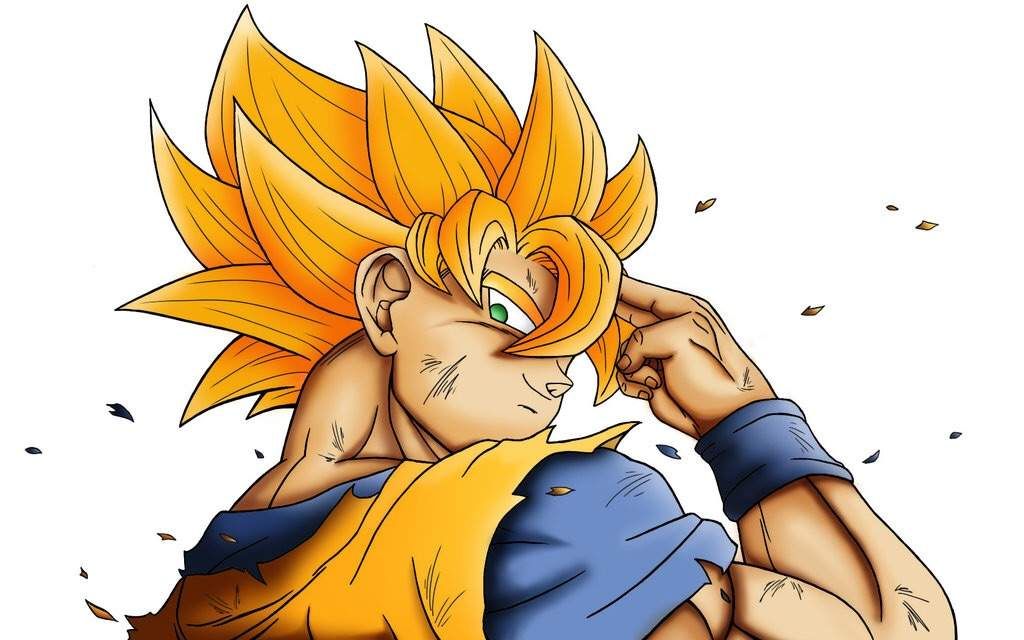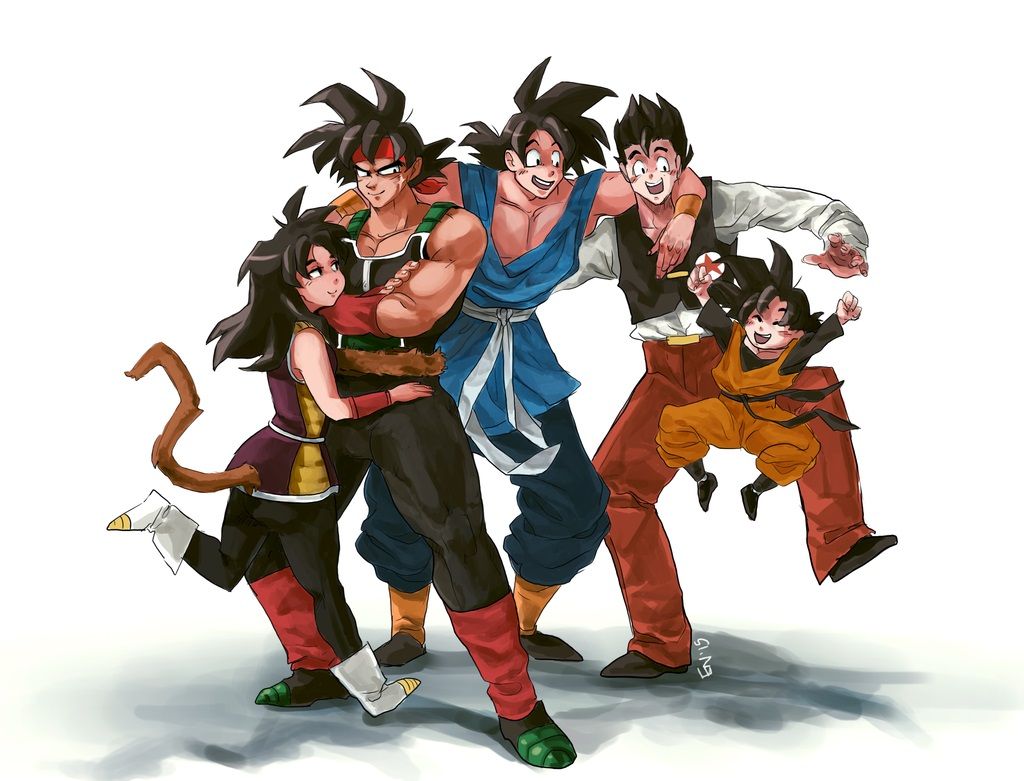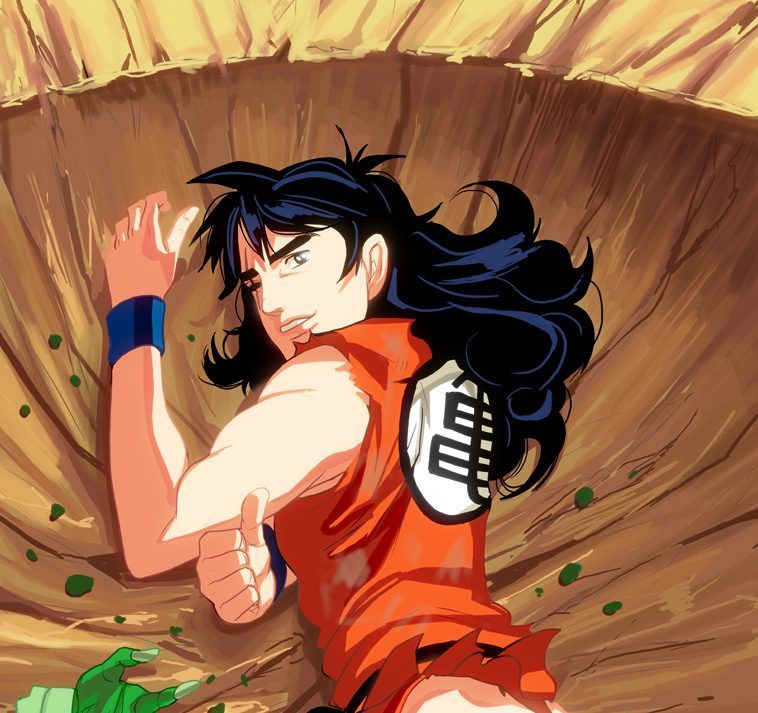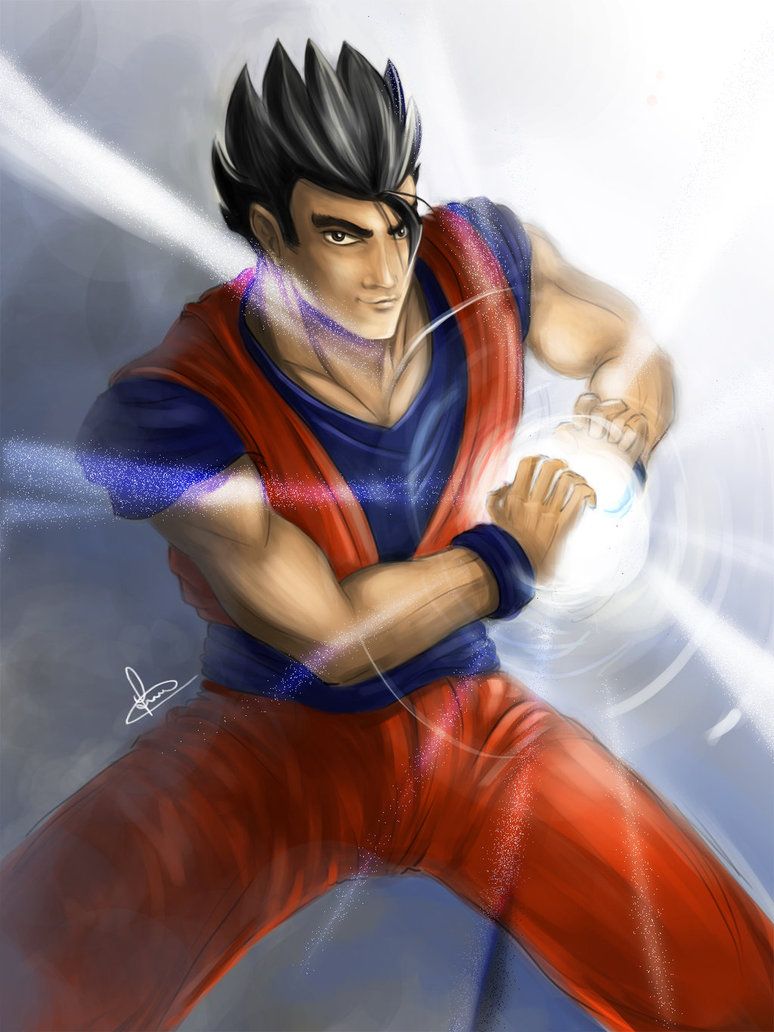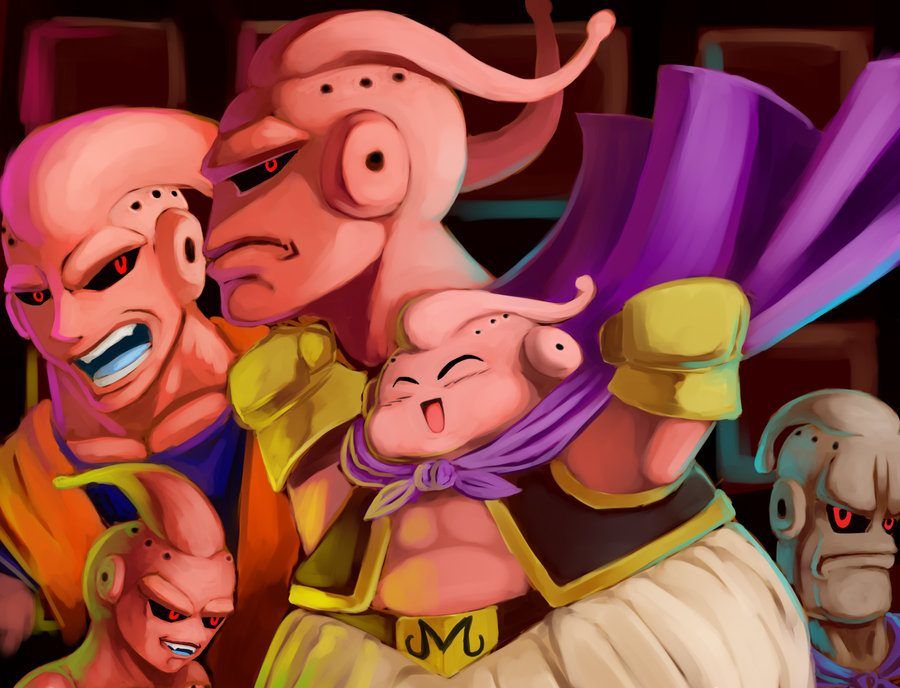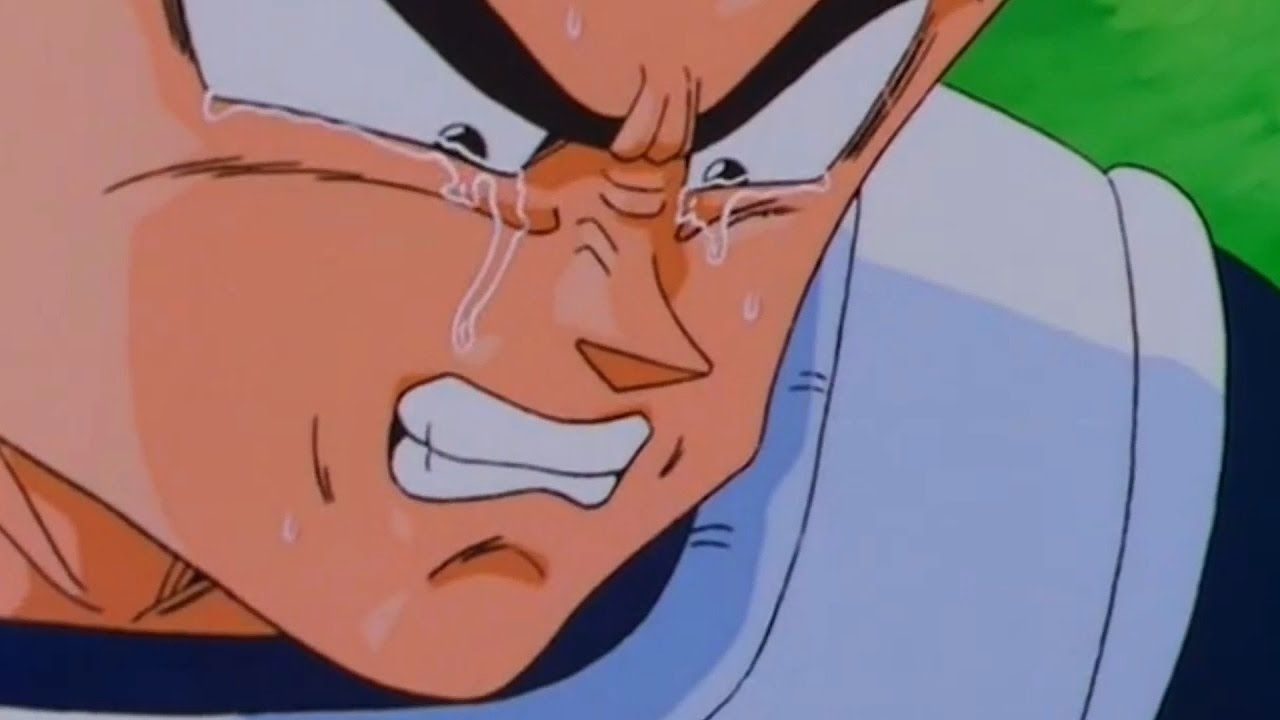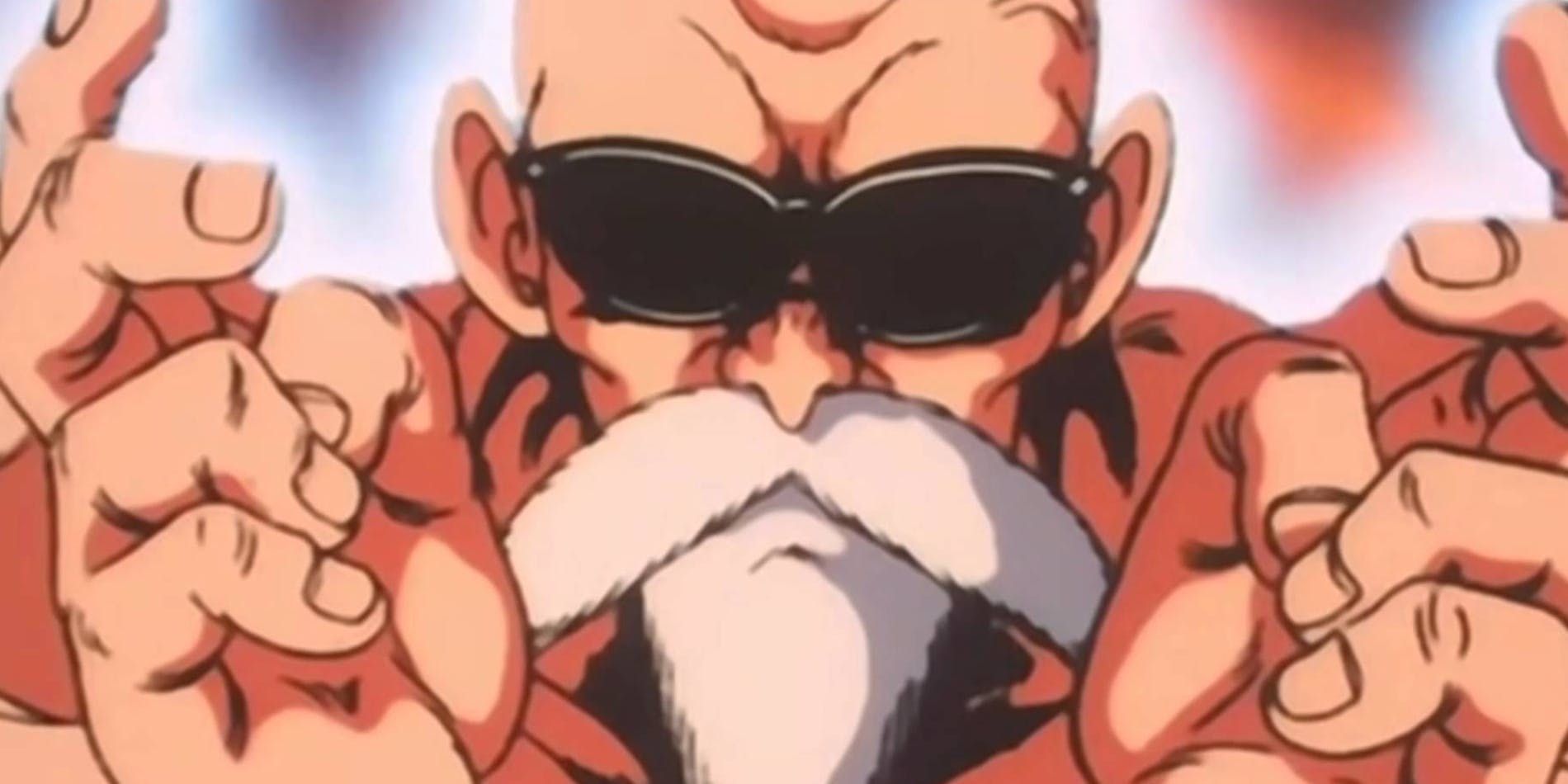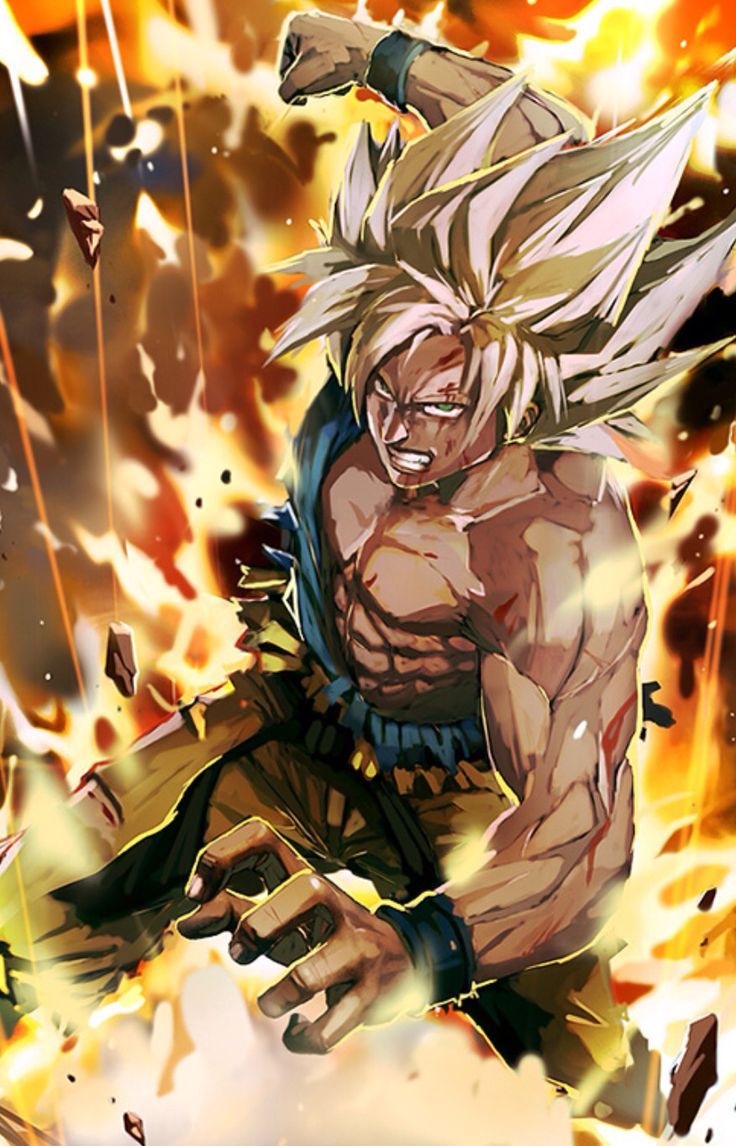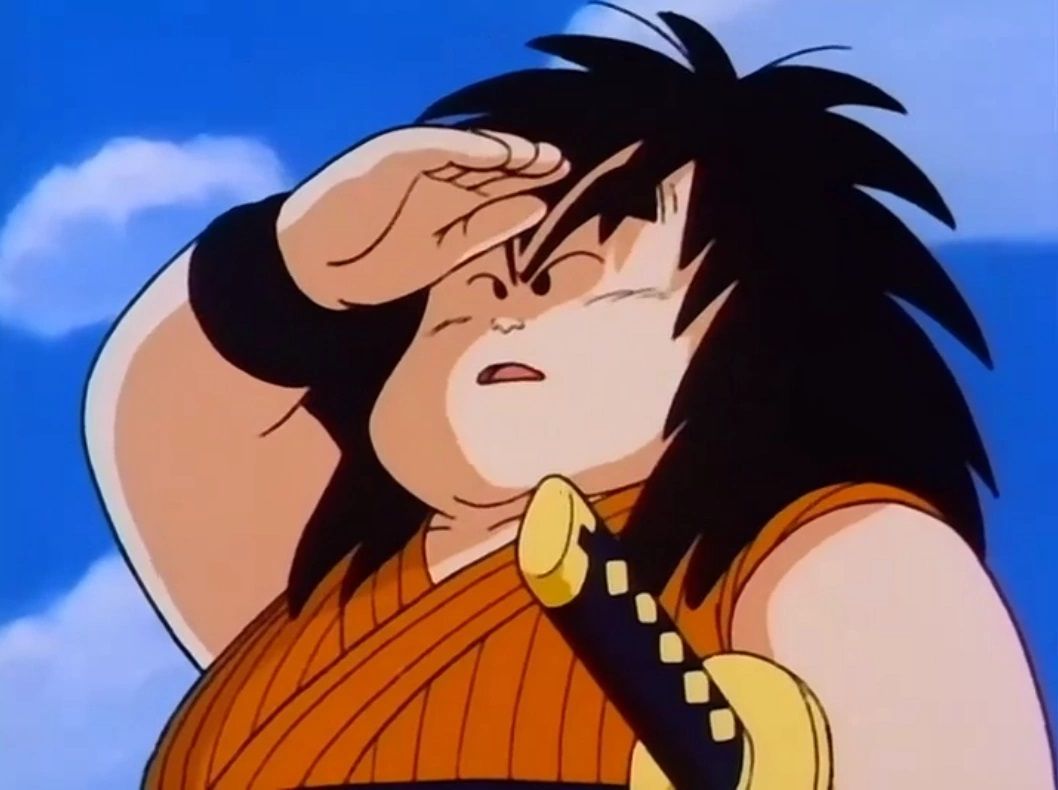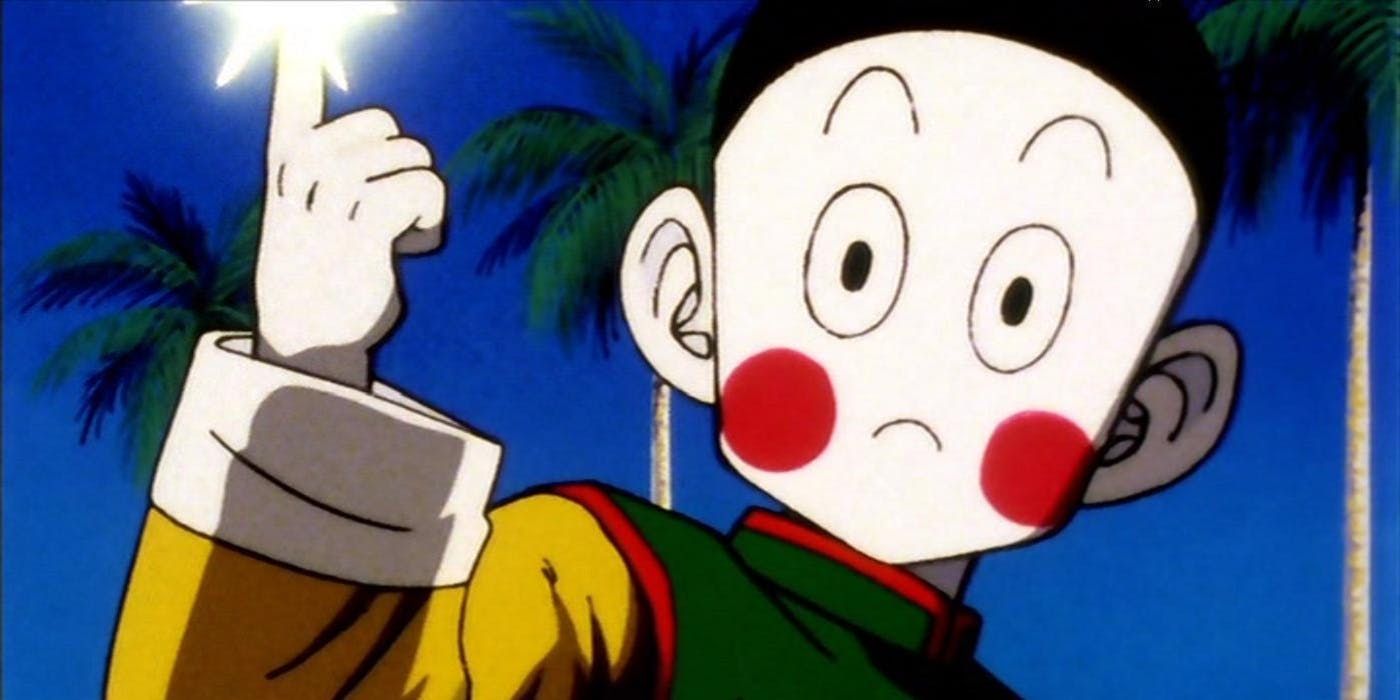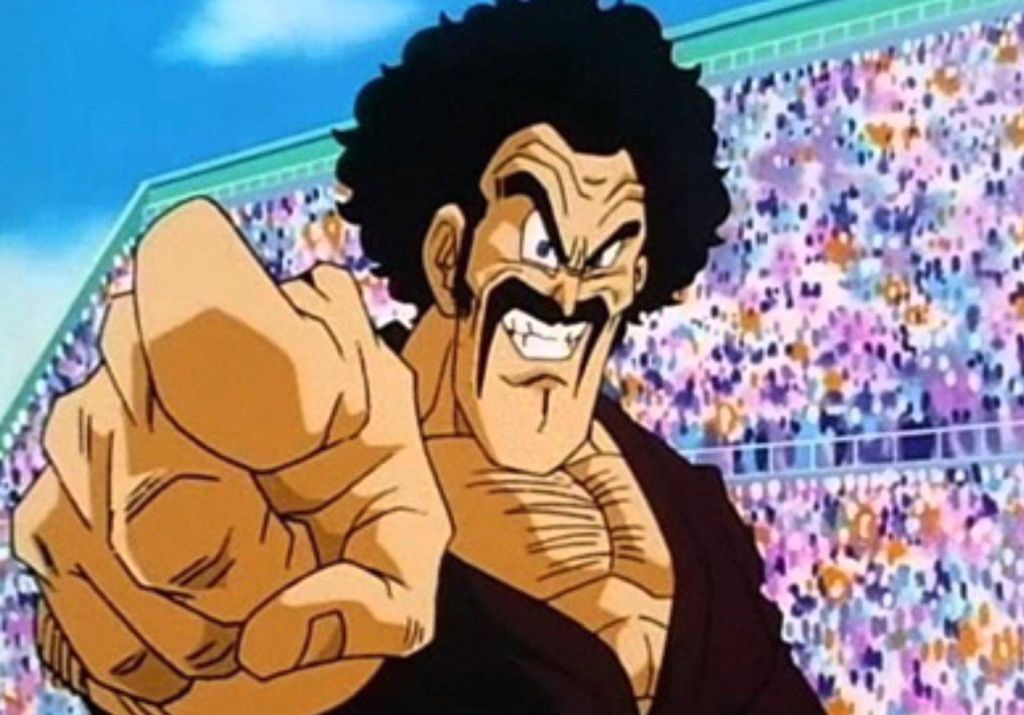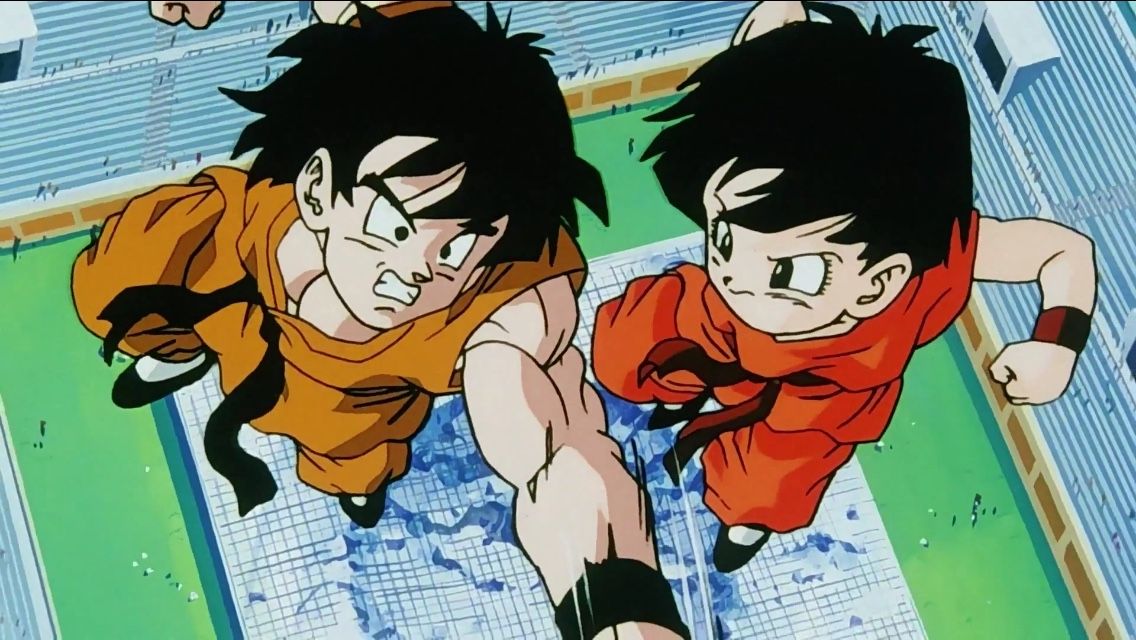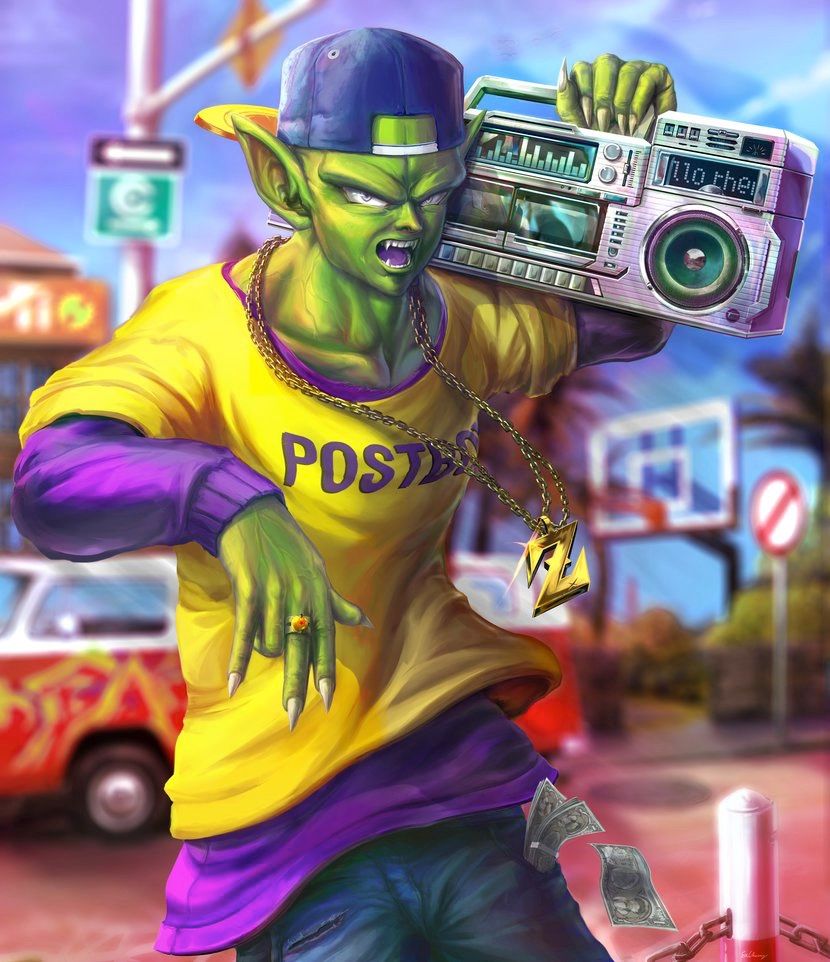Most people watched Dragon Ball when they were younger and, perhaps because of some strange sense of nostalgia, they disregard it as a rather simple action show. While the series certainly has its simple moments and does orient itself around action, it is far more complex than the average fan gives it credit for. Toriyama’s manga was not written with a specific demographic in mind. It was published in a magazine primarily for Japanese pre-teen boys, but Toriyama isn’t the kind of writer to care about who’s reading. For him, Dragon Ball was about writing what he wanted. As a result, the story could get quite serious and complicated at times when you’d expect a lighter, simpler narrative.
Nothing shows this idea more than the many character arcs at play throughout the manga’s ten-year run. Just about every named character has an arc, even if it’s only for one saga. Some characters even go on to have fairly involved arcs that completely trump the notion that Dragon Ball lacks in depth. Along with the arcs are the series’ many main themes. For an action manga, Toriyama was consistent with what he wanted to say with Dragon Ball. Due to the reputation of the series, even the biggest and most real fans miss out on all the layers at play. It’s time you changed the way you experience Dragon Ball.
25 The Rejection And Acceptance Of Goku’s Saiyan Heritage
Never let anyone tell you Goku doesn’t develop in Dragon Ball Z, because the first two story arcs very blatantly revolve around him as a character. More specifically, the Saiyan and Frieza sagas focus themselves on Goku’s relationship with his Saiyan heritage. Upon learning that he’s a Saiyan from Raditz, Goku immediately rejects that notion and latches onto the idea that, while he may have been born on Planet Vegeta, he was raised on Earth and that’s all that matters. We see a visual representation of this philosophy in his dogi when he still retains the Kame kanji after having trained with Kaio. Vegeta, likewise, serves as an antithesis to Goku in the arc as both characters end up representing the dichotomy between nature versus nurture.
Goku's Saiyan background is far more complex than fans give it credit for.
Come the end of the fight and Goku begins to see the merit in his Saiyan tendencies. In hindsight, this is something that has been building since the 23rd Budokai, but it’s the fight with Vegeta that fully awakens Goku. Perhaps because of this awakening, Goku doubles down on his Earthling identity during the Frieza saga even going so far as to spare the Ginyu Force to distance himself from Saiyan culture. As Vegeta finds himself defeated by Frieza, however, he begs Goku to avenge the Saiyans. It’s here where Goku finally decides to take on the mantle of a Saiyan warrior. By the time he triggers into a Super Saiyan, he’s finally accepted who he is: a Saiyan from Earth.
24 Piccolo’s Parallels To Goku On Namek
Goku isn’t the only person on Namek whose character arc deals with the concept of accepting one’s heritage. While many people see Piccolo as a complete character by the end of the Saiyan saga, he very much still develops throughout the last third of the Frieza saga. In the same way, Goku has to accept he is a Saiyan before he can fight Frieza, Piccolo, too, must accept he is a Namekian in order to fight the tyrant. Both characters arrive on Namek to help their peers, but quickly realize the scope of the situation they’re in and vow to avenge their races as well. Not just that, they both undergo symbolic personality shifts in order to do so.
In Goku’s case, he becomes the legendary Super Saiyan. Where he was once calm and composed, he is now furious and blood hungry. In Piccolo’s case, he undergoes a taboo ritual where he assimilates Nail, granting him a tranquility and understanding of his people that he never had while also taking on some of Nail’s quirks. More importantly, both characters slowly regain their essences while fighting Frieza, but not without experiencing a permanent shift in demeanor. Both characters are inherently different after the Frieza saga, and it’s because they symbolically accepted who they truly were.
23 Vegeta Is Still A Villain During The Cell Saga
Although Vegeta is officially part of the main cast by the Cell saga and quite definitively a protagonist, he is still technically a villain throughout most of the story arc. He just happens to be on our side for the time being. Krillin explicitly mentions this early on when Bulma wants to take out Dr. Gero before he can even build the Androids. While it may be a thoughtful move, it does mean Vegeta would no longer have a common enemy to ensure he doesn’t start causing trouble for the heroes. More importantly, Vegeta even threatens the main cast should they so much as lay a finger on Gero before the time comes to actually fight him.
Vegeta doesn't truly reform until the very end of the Cell saga.
Vegeta’s villainous actions continue for the remainder of the saga as he ends up causing more trouble than the actual Androids. He’s reckless in his fight with 18; he treats Future Trunks like total garbage, and he’s directly responsible for Cell becoming Perfect. His redemption only comes at the end of the arc when he snaps over Trunks’ demise and then distracts Cell long enough for Gohan to pull off the finishing blow. Up until that point, though, Vegeta is as much of a villain as he was on Namek. Just a bit more docile.
22 Krillin’s Pursuit Of Love
What exactly is Krillin’s character arc? Most will tell you it’s warming up to Goku during their initial training with Master Roshi while learning the value of martial arts, and though they wouldn’t be wrong, they’d be missing the forest for the trees. Krillin does defrost and grow as a person while training alongside Goku, but his series wide character arc revolves around a pursuit of love. Think back, why exactly did Krillin want to learn martial arts in the first place? To pick up women. The whole reason he wanted to train with Roshi was to find an easy way to meet girls.
Even though he develops pure reasons for wanting to be a martial artist during the 21st Budokai arc, he never gives up on his desire for love. He mentions in Dragon Ball Z how he still hasn’t found a girlfriend, and laments on this notion when he thinks he’ll have to put his life in danger by helping Goku fight Raditz. Come the Cell saga, and Krillin finally gets a chance at love. His relationship with 18, while mostly one-side, is organic and sheds life on Krillin as a character. When the time comes to make a wish on the Dragon Balls, he decides to put 18’s needs first which ultimately causes her to fall for him. Selflessness found him love. It’s a surprisingly classical arc hidden amongst all the action and drama.
21 Future Trunks’ Strength In Super Makes Perfect Sense
Dragon Ball Super gets a fair amount of criticism regarding how it portrays power scaling. While Akira Toriyama never particularly cared for Battle Power after the end of the Frieza saga, he did keep a consistency among the character in terms of how the Z-fighters were tiered. Yamcha, Tien, and Krillin were at the bottom; Piccolo was in the middle; and Goku, Vegeta, and Gohan shared the top spot. Come Super, and that hierarchy is just about thrown out the window in favor of whatever works for the moment. Trunks’ return was met with a fair bit of a confusion. He was never weak, but he was definitely at the bottom of the Saiyan totem pole. Now, though, he’s as strong as a Super Saiyan 3 Goku.
It can be jarring at first, but it actually makes perfect sense. Trunks is a half-breed, after all. In the same way, Gohan was able to get ridiculously strong with little training, Trunks did the same in the future. Gohan’s entire character is a precedent for Trunks’ boost in the Goku Black arc. Honestly, it would make less if Trunks came back and wasn’t at least on SSJ3 Goku’s level. On top of that, he’s trained using the Z-sword by Kaioshin and even mastered SSJ2. Super can get funky with power scaling, but Trunks is in no way part of the problem.
20 Future Gohan Had No Clue How To Train
One of the most commonly asked questions within the fandom is why Future Gohan couldn’t turn Super Saiyan 2 while his much younger main timeline counterpart could. After all, Gohan is a character whose power is triggered primarily from rage. Future Gohan lives in a dystopian future where everyone he’s ever loved has been taken away by the Androids, yet he’s barely stronger than his father was on Namek. It almost seems like an oversight on Toriyama’s part, but considering Future Gohan was formally introduced in the manga right before the Cell Games, it’s obvious that this cannot be the case.
Gohan is nothing without his father.
Rather, Future Gohan’s appearance is meant to make readers realize just how different the two Gohans have it. Future Gohan had nobody to train him and nobody to train with until Trunks. Main Gohan had Piccolo and his father. On top of that, Goku was the one who figured out Saiyans could transcend Super Saiyan. For Future Gohan, he, unfortunately, believed SSJ was his limit. Without someone to guide him to Super Saiyan 2, he was stuck at his father’s strength desperately trying to fend off the Androids with what he had. In reality, Future Gohan is a reminder of the importance of training with others and pushing past your supposed limits.
19 Goku Giving Cell A Senzu Bean Was Smart
If there’s one moment in Dragon Ball that nets Goku criticism unlike any other, it’s when he gives Cell a senzu bean during the Cell Games right before Gohan goes up for his match. In and out of universe, this is seen as an incredibly poor choice that illustrates just how little Goku understands his son. Piccolo reprimands Goku, Goku decides to jump back into the fight, and then Gohan realizes his full potential rendering the situation moot. While Goku may come out poorly because of this decision, giving Cell a senzu bean was the smartest thing he could have possibly done.
A single senzu bean saved Gohan's life, and he didn't even need to eat it.
Cell wanted to fight Goku more than anyone. When Goku told him Gohan was stronger and would be taking his place, Cell still wanted to fight Goku. In giving Cell a senzu bean, Goku made an overconfident gesture that showed Cell just how serious he was about Gohan. As a result, Cell, in turn, decided to play with his food so to speak instead of taking out Gohan immediately in order to get back to fighting Goku. This one senzu bean allows Cell to “spare” Gohan, ultimately leading to the triggering of Super Saiyan 2. Without that senzu bean, Earth would have lost its one chance at survival.
18 Goku Does Not Win A Single Fight In The Cell Saga
Not only does Goku only fight twice in the Cell saga, he loses both fights, albeit in unorthodox means. At this is a story arc more focused on Goku as an ancillary character, he spends most of it physically out of the picture while still driving the story along via his presence, or lack thereof. As a result, he only manages to get two full fights in before his sacrifice in the Cell Games. His first fight, against Android 19, very much could have been in his favor, but he began succumbing to the heart virus. His second fight against Cell, while a phenomenal battle and one of Goku’s best, ends with Goku forfeiting so Gohan can take up the mantle.
Goku fighting twice and losing both times is an interesting change of pace for Dragon Ball, but one that doesn’t hurt his legacy. He’s still clearly an immensely powerful martial artist, but the Cell saga is mainly about giving others the time to shine. Toriyama allowing Goku to sit out most of the action is a bold decision and one that shows a tremendous amount of respect towards the supporting cast. Along with that, Goku losing adds a tension we haven’t seen yet in the series. What happens when the man who always wins loses?
17 Goku Is Not An Absent Father
If you’re a fan of Dragon Ball, chances are you’ve been guilty of perpetuating the myth that Goku is a bad and absent father. This interpretation of the character mostly stems from TeamFourStar’s Dragon Ball Z Abridged these days, but it’s been hanging around the fandom for ages. After all, we see Piccolo train Gohan for an entire year and their bond is so clearly strong that Piccolo must naturally be a better father figure for Gohan, right? Plus, Goku’s not around half the time so he’d never have time to actually raise his son. The problem with this logic is that, while it makes sense from a casual perspective, it’s inherently flawed.
Goku's there for his sons whenever he can be, and that matters more than anything.
Gohan and Piccolo’s dynamic is not paternal by any means. Gohan respects him and loves him deeply, but not to the extent of his father. He wants to honor Piccolo, but he loves his father to an extreme degree which we see constantly. On top of that, Goku is around quite a lot for Gohan’s childhood and he’s only ever absent because of, well, death. He raises him for four years, lives and trains with him for three years, and then spends an entire year alone with him in the Room of Spirit and Time. Goku’s not around for Goten’s childhood for obvious reasons, but he raises him once he comes back to life. He is by no means a bad father. Circumstances just aren’t kind to him.
16 Yamcha Never Gets What He Wants, And That’s A Good Character Arc
A character does not have to get what they want at the end of their character arc for said arc to be complete or good. Yamcha is a character who wants to settle down with a girlfriend and become a master martial artist. Naturally, he goes on to do neither. Does this mean he has a bad character arc? No. Does this mean his character arc was abandoned? Also, no. Yamcha’s arc very clearly ends in the Cell saga when he formally gives up fighting after his encounter with Gero. He also mentions a girlfriend at the end of the arc so he’s still at least pursuing love.
It’s understandable not to like the arc, especially when so many other characters get what they want through their arcs, but Yamcha was always a character who existed more in the background after the first arc. It only makes sense his arc would take a backseat or even veer off in a different direction entirely. Having a character give up on martial arts because of the increasing intensity of what the heroes are facing is a unique direction and one that makes the world of Dragon Ball feel a bit more real. Is it frustrating for Yamcha fans? Most definitely, but there’s literary merit in an arc like his.
15 Ultimate Gohan: The Payoff To Seven Years Of Storytelling
What exactly was Gohan’s character building up to? He was introduced in the Saiyan saga as Goku’s absurdly powerful son with seemingly limitless potential, became the main character at the end of the Cell saga, and then lost his role as protagonist to Goku by the end of the series. Knowing Toriyama, there probably wasn’t one consistent plan for Gohan’s arc. As an author who wrote mostly by the seam of his pants, Gohan sort of just ended up where he did. That said, it’s not like his endgame isn’t fitting. The brilliance of Toriyama’s writing style is that he didn’t need to plan story beats for them to feel fitting.
While Gohan does not beat Majin Buu on his own, his Ultimate power-up is an incredibly fitting end to his arc. He finally has all his potential unleashed, he’s finally the single strongest unfused character in the series, and, as his father takes the role of the main character from him, he’s finally actually allowed to pursue his academic dreams. Gohan was never a full-fledged martial artist, but he always fought when he knew he had to. He didn’t have it in him to defeat Buu, but that’s alright, because he realizes his potential and was rewarded with his dreams. Only after taking responsibility for his lack of training does Gohan get the ending he deserved. Speaking of responsibility…
14 The Buu Saga Is About Taking Responsibility
The Buu saga is inherently about taking responsibility for your actions. We see this in just about every single main character’s arc. Gohan hasn’t been training and he has to take responsibility for that after failing to prevent Buu’s birth; Vegeta pushes Goku into a grudge match and he has to take responsibility for waking Buu; Goku wants the living to take responsibility for their planet, but he realizes that he is responsible for Buu’s awakening as well and decides that he needs to play a role in stopping him. This is a story arc about coming to terms with your mistakes and correcting them.
Clean up your messes, because no one else can.
For Gohan, he realizes the importance of his power and gets his potential unlocked. Super makes it so that Gohan stops training again, defeating the point of the development, but the original series ends with no such concept. Vegeta is directly responsible for Buu’s awakening so he gives his own life to try to defeat Buu. Later on, he works together with Goku to stop the Djinn once and for all. Goku, like Vegeta, realizes he’s also responsible and takes the main character role from his son to clean up the mess he made. Him using the Genki Dama to defeat Buu is the final ribbon on the responsibility bow as the Earthlings are coming together to defeat Buu themselves, something Goku wanted to see all arc.
13 A Character Being Flawed Is Not Bad Storytelling
It’s okay for characters to make mistakes and it’s okay for characters to sometimes make stupid decisions. A character being dumb is not bad writing. A character not being pre-preemptive is not bad writing. One moment that gets a lot of pushback for being “poorly written” is the Z-fighters not taking out Gero earlier. Why would they? That would be horribly out of character for them. They’re martial artists and they want a challenge. More importantly, it’s rooted in reality. How many people would actually put a stop to something before it even went wrong if they had three years to prepare? Not many.
Vegeta letting Cell absorb 18 is stupid, but it’s not bad writing. Vegeta would absolutely do that. Vegeta having flaws makes him more human. Goku letting Vegeta live at the end of the Saiyan saga is stupid in context, but it makes sense and it makes him a more rounded character. Goku is selfish, and he makes an incredibly selfish request. It’s flawed and it’s good writing because it develops Goku’s character while keeping Vegeta alive. Characters should have flaws and they should make mistakes. Dragon Ball is a character-driven story, and stories like these only thrive when our characters can truly fail.
12 Turtle School Philosophy: There’s Always Someone Better
One of the first themes, if not the first, Dragon Ball establishes is the notion that there will always be someone better. This is a philosophy that stems deeply from Roshi’s training all the way back in the 21st Budokai arc. After realizing just how quickly Goku and Krillin are growing in power, he decides that he must join the Budokai himself as the mysterious Jackie Chun in order to win and ensure his students don’t grow egos if they win. Even though this is a concept very much rooted in the arc it was introduced in, Toriyama would never let go of this idea for the remainder of the franchise.
Just about every arc sees some instance of someone better showing up and signifying to Goku that he still has growing to do. TaoPaiPai and Karin do this in the Red Ribbon Army arc; Tien in the 22nd Budokai; Piccolo, Mr. Popo, and Kami in the Demon King Piccolo arc; Piccolo in the 23rd Budokai; Raditz, Enma, Kaio, and Vegeta in the Saiyan arc; Frieza in the Namek arc; and the list goes on. This is a series inherently about never becoming complacent. If you think you’re the best, chances are you most definitely aren’t. Always push yourself to be better, because someone else always is.
11 Goku Develops More In Z Than He Does In The Original Series
“Goku develops in Dragon Ball, not Dragon Ball Z” is a common sentiment among fans, but it isn’t exactly rooted in truth. For some reason, there’s this idea that Goku is a static character throughout the Z-era and a dynamic one before it. While we won’t be getting into the logistics of Goku’s arc until later on, it should be noted that, not only does he develop throughout DBZ, he develops more in Z than he ever did in the series’ first six arcs. Truth be told, Kid Goku is quite the static character to the point where Krillin was introduced because Goku was too bland.
Dragon Ball Z is effectively one long character arc for Goku.
While Goku gets some development in the 21st Budokai, Demon King Piccolo arc, and 23rd Budokai, he remains fairly flat during the Hunt for the Dragon Balls, Red Ribbon Army, and 22nd Budokai. There are changes in his character throughout the whole series, but he’s far more static in DB than DBZ. In Z, Goku develops greatly every single arc. There’s a clear progression to his character from start to finish and the big changes happen only after the first third. This idea that Goku doesn’t develop after the 23rd Budokai is entirely baseless and very blatantly shows who paid attention to the narrative and who didn’t.
10 Yajirobe Is The Strongest Man Alive
As far as natural strength goes, Yajirobe might just have every other character in the series beat. When Goku meets him for the first time, Yajirobe is able to hold him off rather evenly. More importantly, he takes out one of Piccolo’s demons with incredible ease. Later on, he even scales Karin’s Tower in record time while also carrying Goku on his back. He never develops Ki or has a proper one-on-one fight after the Demon King Piccolo arc, but he still stands out as one of the more latently powerful characters in the franchise. In terms of Earthlings, Yajirobe might have a better head start than anyone else.
Think about, Yajirobe is equal to a Goku who just lost to Tien in the 22nd Budokai which means Yajirobe is in the same league as two experienced martial artists without any training. If Yajirobe took his training with Kami seriously during the Saiyan saga, he may have actually become strong enough to pose a serious threat to at least Nappa. It really is a shame Yajirobe basically gives up on martial arts before he even starts, because he clearly has the highest potential of all the humans in the series.
9 Chaozu Does Not Win A Single Fight In The Entire Series
Similar to how Goku fails to win a single fight in the Cell saga, Chaozu manages to get through the entire series without snagging a single win under his belt. Granted, he only fights three times over the course of the entire series, but he was also a supporting character for the majority of the franchise’s run. His only fight close to even was his very first against Krillin. There, he managed to lock Krillin with his telekinesis, but Krillin ultimately outsmarted him and rung him out of the arena. From there, Chaozu loses his next two matches without putting up a fight.
Chaozu is more of an accessory to Tien than he is an actual character.
In the 23rd Budokai, he becomes the first main character to lose during a tournament preliminary round. TaoPaiPai, now returned as a cyborg, utterly destroys Chaozu, giving Tien a personal incentive to beat him. Come the Saiyan saga, Chaozu gives his life to try and defeat Nappa, but his sacrifice does absolutely nothing to the Saiyan and Chaozu never gets to fight again. It gets so bad for him, that Tien even avoids bringing him along during the Cell saga. By the time the Buu saga hits, Chaozu is just a relic of an era of Dragon Ball long gone.
8 Mr. Satan Genuinely Is A Big Deal
Mr. Satan is a gag character, but he’s a gag character in a league of his own due to the fact that, in any other martial arts manga, he’d be one of the strongest characters alive. When you really zone in on Mr. Satan as a character, it’s obvious that the only reason he’s a joke is because of the Z-fighters. These are super-powered men brimming with Ki, transformations, and planet-shattering punches. Mr. Satan, on the other hand, is just a regular, super strong man. He lies about beating Cell and he rigs his matches, but he genuinely did win a Budokai all on his own and he’s probably the strongest warrior not associated with the Z-fighters alive.
In the real world, Mr. Satan would absolutely throttle any and everybody thrown at him. He doesn't’ have super speed or super strength, he’s just the peak of natural human athleticism. One kick from Mr. Satan would likely send you flying. He wouldn’t stand a chance against the weakest Z-fighter, but he doesn’t need to. His legacy comes from the fact that he’s just a really strong person with no frills attached. He’s fun to laugh at, but he deserves your utmost respect.
7 Pan Is Dragon Ball’s Logical Next Step
If there’s one character Dragon Ball needs to start focusing on as soon as possible, it’s Pan. Her introduction at the end of Dragon Ball Z is strikingly similar to Gohan’s, and likely for good reason. Both are four years old when we first see them, both are incredibly impressive when it comes to raw power, and both are clearly about to be thrust into a life of martial arts. The difference between the two is that Gohan doesn’t want that life, but Pan does. Dragon Ball Z ends by setting up the raw talent of the next generation and neither GT or Super do anything with it.
Toei's biggest mistake was neglecting Pan in GT and Super.
It’s quite a shame, really, because giving Pan some focus genuinely is the next logical step for the series. Her parallels with Gohan would allow her to develop naturally while still rooted in the themes of the overarching narrative. Toei basically ignoring her for GT and having Super take place before her birth/shortly after ends up being a waste as she’s where the storytelling potential is hiding. That’s not to say stories can’t be done without her, but she should be taken into account as her existence is brimming with possibilities. In a series that has always done a good job at flowing from story to story, it feels wrong to ignore Pan.
6 Piccolo’s Life Is One Big Identity Crisis
Piccolo doesn’t know who he is, and he spends most of the series that way. In fact, while many see Piccolo’s main arc as him becoming a better person through his bond with Gohan, his more substantial character arc, by far, involves him slowly realizing the importance of coming to terms with his identity. Two halves of one singular being, Piccolo sees himself as a combination of the reincarnation and son of the late Demon King Piccolo. At the same time, he feels different and doesn’t know what his place in the world is. When he arrives on Namek, he finds newfound meaning, but the Cell saga sees him still desperately trying to latch onto his demonic origins.
It’s only when he fully realizes that he needs to fuse with Kami that his identity crisis can come to an end. He tells Kami that they need to merge back into one being in order to stop Cell, but that Piccolo will remain the dominant personality, completely assimilating Kami. Even though Piccolo effectively maintains his personality, this ritualistic merging gives him an understanding of who he was all along; a combination of the divine and demonic. Only in accepting Kami back into himself is Piccolo allowed to embrace his truest identity.

